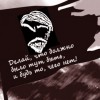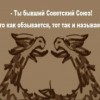Назвали Mesophthirus engeli. То есть эти ребята сначала научились есть динозавров, а потом уже по мере происхождения оказались на птицах
статья в журнале NATURE COMMUNICATIONS, 2019
New insects feeding on dinosaur feathers in mid-Cretaceous amber
Taiping Gao, Xiangchu Yin, Chungkun Shih, Alexandr P. Rasnitsyn, Xing Xu, Sha Chen, Chen Wang & Dong Ren
Due to a lack of Mesozoic fossil records, the origins and early evolution of feather-feeding behaviors by insects are obscure. Here, we report ten nymph specimens of a new lineage of insect, Mesophthirus engeli gen et. sp. nov. within Mesophthiridae fam. nov. from the mid-Cretaceous (ca. 100 Mya) Myanmar (Burmese) amber. This new insect clade shows a series of ectoparasitic morphological characters such as tiny wingless body, head with strong chewing mouthparts, robust and short antennae having long setae, legs with only one single tarsal claw associated with two additional long setae, etc. Most significantly, these insects are preserved with partially damaged dinosaur feathers, the damage of which was probably made by these insects’ integument-feeding behaviors. This finding demonstrates that featherfeeding behaviors of insects originated at least in mid-Cretaceous, accompanying the radiation of feathered dinosaurs including early birds.
...Here, we report ten nymph specimens of an ectoparasitic insect clade, Mesophthirus engeli Gao, Shih, Rasnitsyn & Ren, gen et. sp. nov. assigned to Mesophthiridae Gao, Shih, Rasnitsyn & Ren, fam. nov. of order Incertae sedis. These nymph insects crawled and fed on two feathers preserved in two pieces of amber, ...from the mid-Cretaceous of Myanmar. ...The strata producing the Myanmar (Burmese) amber was radiometrically dated at 98.79 ± 0.62Ma
...In summary, the new findings provide the earliest known evidence about the origin of ectoparasitic insects feeding on
feathers, which strongly support that the integument-feeding behaviors of insects appeared during or before the mid-
Cretaceous along with the radiations of feathered dinosaurs including birds.


еще на несчастных динозаврах находят клещей. Иксодовых https://www.nature.com/articles/s41467-017-01550-z.pdf?origin=ppub

кровососущих клопов тоже нашли
https://www.sciencedirect.com/science/article/pii/S0960982214007611
Blood-Feeding True Bugs in the Early Cretaceous
Yunzhi Yao Wanzhi Cai Xing Xu Chungkun Shih Michael S. Engel Xiaoting Zheng Yunyun Zhao Dong Ren







Комментарии (0)